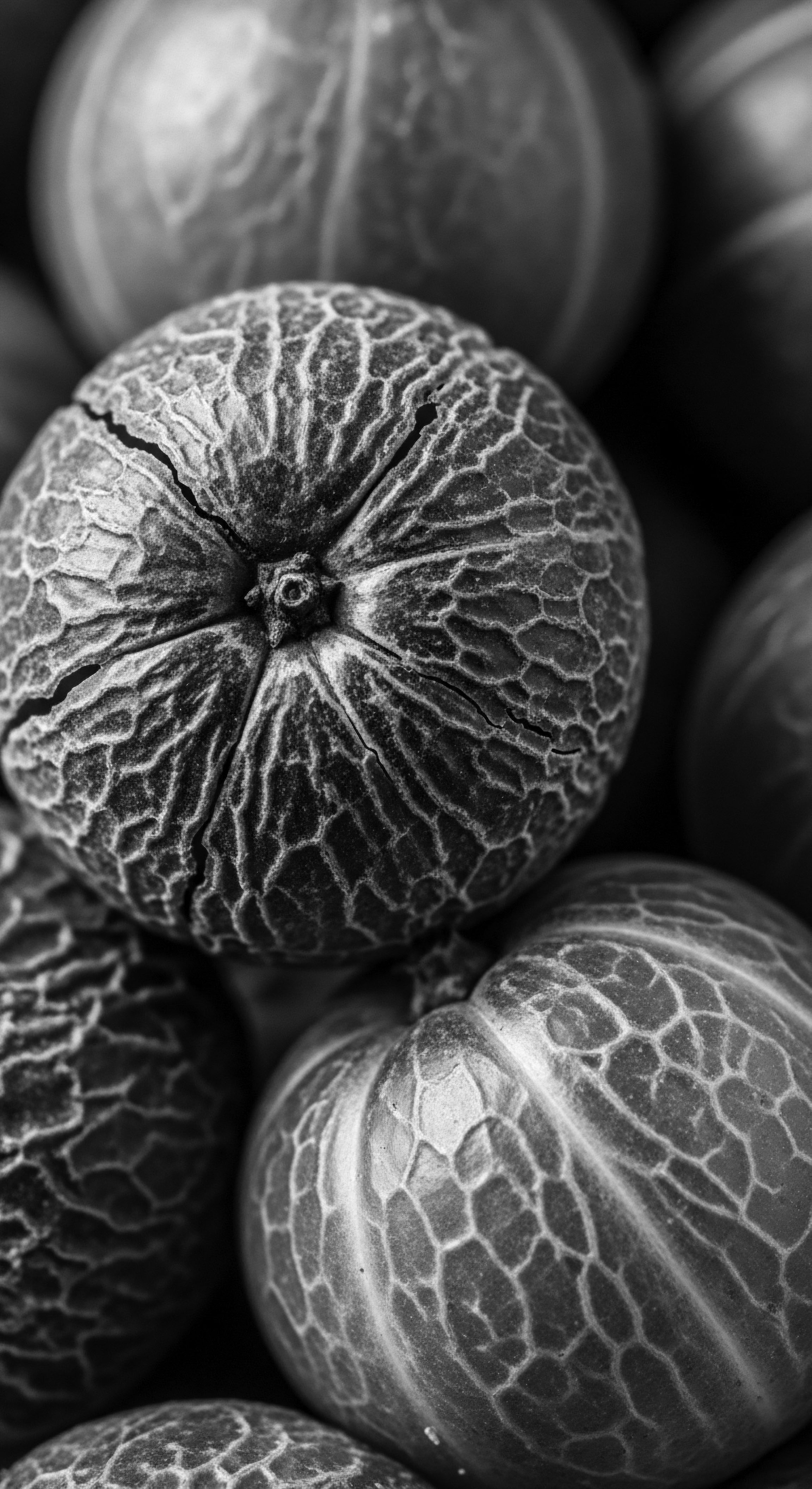
Roots
Across generations, from sun-drenched lands to whispered fireside tales, our hair has held stories. It is a living record, an echo of lineage, carrying within its very structure the whispers of those who came before us. For anyone who has ever gazed upon a cascade of coils, the intricate spirals, or the gentle waves, there arises a quiet wonder ❉ how does this unique pattern, this personal crest, come to be?
How deeply embedded in our ancestral past is this characteristic, and can the very blueprint of our being explain the boundless array of curl found across diverse heritage lines? This inquiry is a journey into the self, a tracing of the tender connection between our inherited traits and the rich tapestry of our collective human experience.
The conversation about hair texture often begins with what we see and feel. Yet, the true architectural marvel lies beneath the scalp, in the hair follicle itself. This tiny organ, a pocket within the skin, serves as the primary sculptor of our strands. Straight hair typically emerges from follicles that are largely round in cross-section, oriented relatively straight within the dermal layer.
In contrast, hair with curl, from gentle waves to tight coils, springs forth from follicles that possess a distinct curvature and an elliptical, or even kidney-shaped, cross-section. This shape, rather like a ribbon twisting as it emerges, sets the course for the hair strand to grow in a spiraled or coiled form. The deeper the curve of the follicle, the more pronounced the curl pattern. This foundational biological reality grounds our appreciation for the varied crowns we wear.
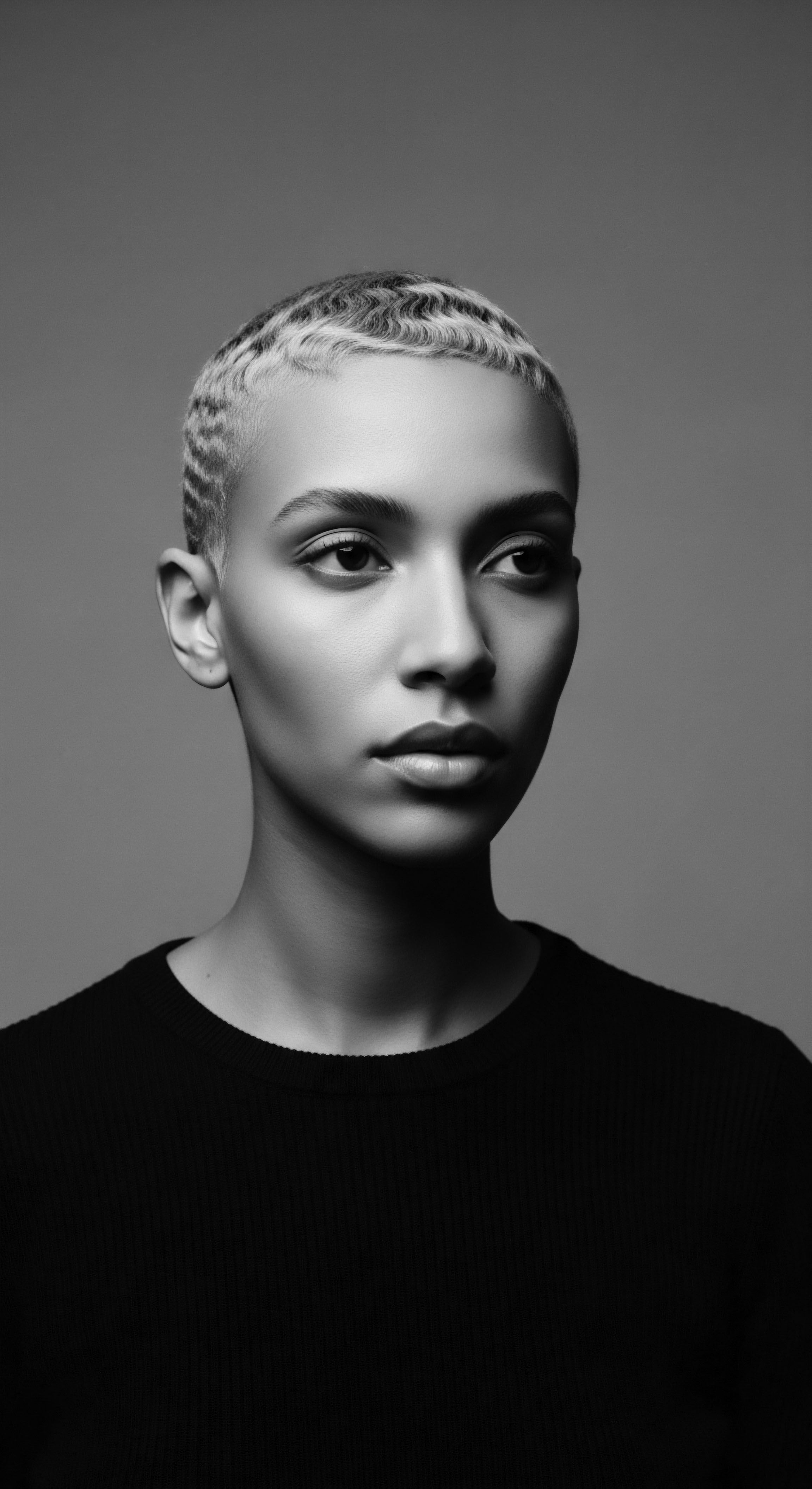
What Shapes Hair from Its Ancestral Source?
Within the hair follicle, specific cells and proteins orchestrate the strand’s ultimate shape. Keratin Proteins, the building blocks of hair, arrange themselves differently in straight versus curly hair. In highly coiled strands, these keratin structures exhibit an asymmetrical distribution within the hair shaft, contributing to the fiber’s intrinsic curve. Furthermore, the number and arrangement of Disulfide Bonds, chemical links between protein chains, play a role; highly textured hair frequently possesses a higher density of these bonds, which provide structural integrity and contribute to its unique form.
The inner root sheath (IRS), a temporary structure that guides the growing hair, also displays asymmetries in curly hair, reinforcing the predetermined curl. These microscopic distinctions hold generations of wisdom, reflecting adaptations that once helped humanity thrive in varied climates and environments.
Ancestral peoples, long before microscopes or genetic maps, understood their hair with a deep, intuitive wisdom. Their observations, passed down through oral traditions and styling practices, recognized the innate properties of their strands. They may not have spoken of keratins or disulfide bonds, but they certainly knew which herbs softened coils, which oils defined waves, and which braiding patterns honored the hair’s inherent resilience. This practical, inherited knowledge formed the earliest “classification systems,” though perhaps not written in scientific treatises, they were lived experiences of hair’s many forms.

How Do We Name Hair’s Inherited Forms?
In contemporary discourse, systems like the Walker Typing system emerged to categorize hair by its curl pattern, ranging from straight (Type 1) to extremely kinky (Type 4c). While these systems offer a shared language for product selection and styling discussion, it is important to acknowledge their origins. They are relatively recent constructs and do not necessarily capture the full spectrum of hair diversity or the fluid nature of curl, nor do they fully encompass the deep cultural significance of hair beyond its physical characteristics.
Many traditional societies possessed their own lexicons, terms rooted in observation of growth, texture, and cultural significance, rather than a numerical scale. These indigenous terms often speak to the hair’s ancestral qualities, connecting it to the land, spirit, and community.
The hair follicle, a tiny marvel beneath the skin, serves as the primary sculptor of our strands, dictating whether hair grows straight, wavy, or coiled.
The journey of a single hair strand follows distinct phases of growth, resting, and shedding. The Anagen Phase, or growth phase, lasts years, while the Catagen Phase is a brief transitional period, and the Telogen Phase is a resting period before shedding. For textured hair, particularly highly coiled types, the growth rate can be slower compared to straight hair, and a greater proportion of hair may exist in the resting phase.
Historical environmental factors played a significant role in shaping hair health. Access to nutrient-rich diets, influenced by geography and ancestral farming practices, would have directly impacted the strength and vitality of hair. Furthermore, exposure to specific climates, whether arid desert or humid rainforest, would have subtly influenced hair’s hydration and overall condition. Ancestral communities developed localized knowledge around nourishing their hair, often drawing from native botanicals and dietary elements specific to their surroundings, effectively creating localized wisdom for hair well-being passed through the generations.
The study of hair, therefore, is not solely a biological endeavor. It is a journey into cultural anthropology, an exploration of human adaptation, and a testament to the enduring presence of inherited knowledge that informs our present understanding of hair’s diverse forms.
| Follicle Shape Circular/Round |
| Common Hair Texture Straight |
| Ancestral Context Predominantly found in East Asian and Indigenous American populations, often linked to adaptations in colder climates to provide insulation. |
| Follicle Shape Oval/Elliptical |
| Common Hair Texture Wavy to Curly |
| Ancestral Context Widespread across European, Middle Eastern, and South Asian heritages, reflecting varied environments and migratory patterns. |
| Follicle Shape Kidney-shaped/S-curved |
| Common Hair Texture Highly Coiled/Kinky |
| Ancestral Context Characteristic of many African and African diaspora populations, suggested to provide thermoregulation in hot, sunny regions. |
| Follicle Shape The subtle curvatures of the hair follicle serve as an elemental blueprint, reflecting a deep, inherited link to our ancestors' survival and adaptation. |

Ritual
From the careful detangling of freshly washed coils to the meticulous crafting of braids that speak volumes, the act of styling textured hair is a ritual steeped in generations of practice. It is a language spoken through touch, a testament to inherited resilience, and a living archive of community traditions. The question of how genetics explains diverse hair curl patterns across heritage lines finds profound expression in these daily and ceremonial practices. Styling, in its deepest sense, becomes an act of conversation with our ancestral past, an honoring of the very structure bequeathed to us.
Protective styling, a widely recognized practice today, traces its roots to ancient times. Braids, twists, and locs were not simply aesthetic choices; they served as vital shields against environmental aggressors, preserved moisture, and minimized manipulation, aiding hair retention. These practices, honed over centuries within African and diasporic communities, reflect an intimate knowledge of highly textured hair’s properties and its vulnerabilities.
For instance, the intricate cornrows depicted in ancient Egyptian art or the elaborate braided styles of West African civilizations were not only markers of social status, marital status, or tribal affiliation; they also understood the hair’s need for minimal intervention and careful safeguarding. This understanding is particularly significant for hair with high curvature, which can be more prone to tangling and breakage due to its unique structure.
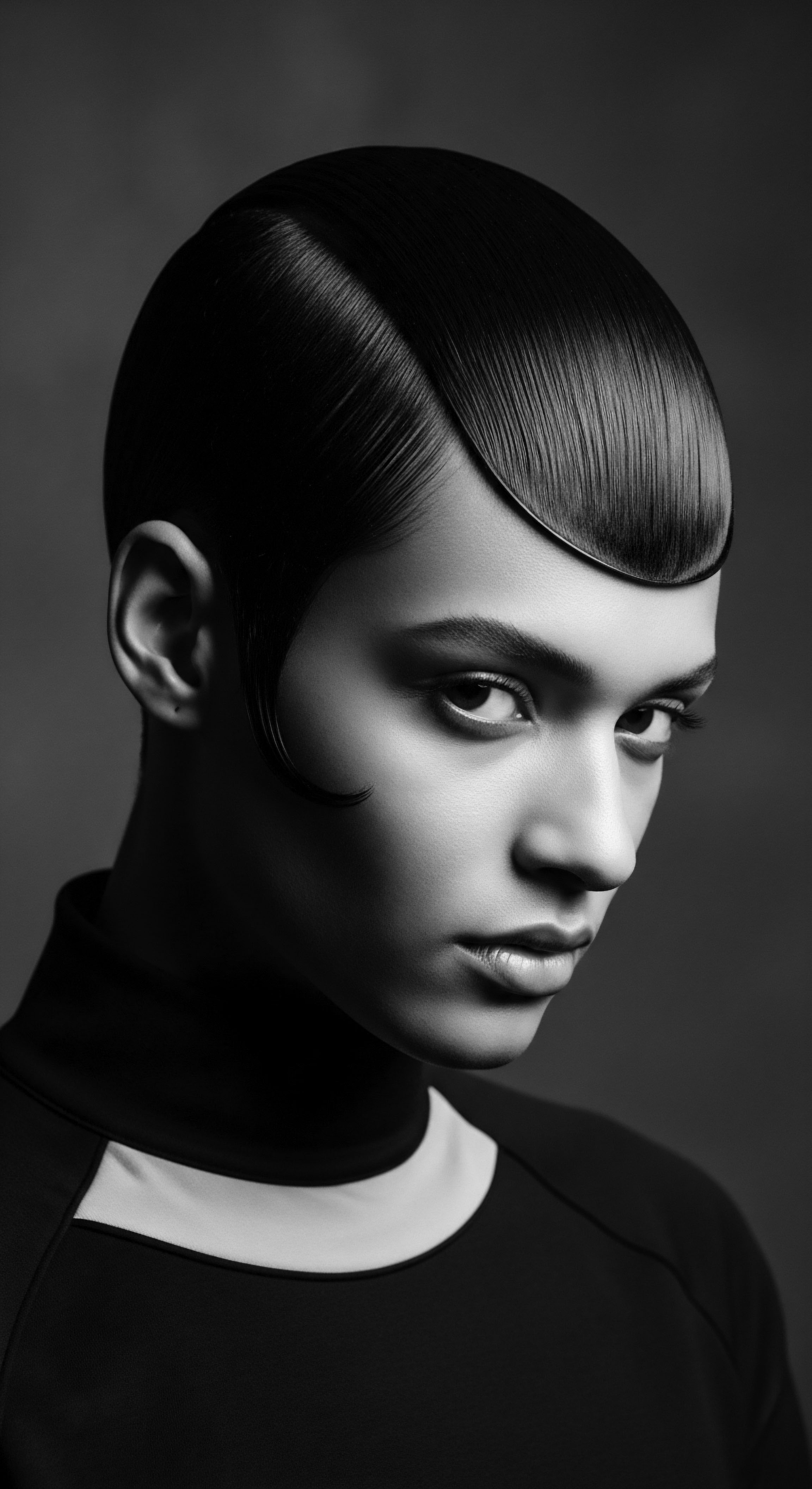
What Ancient Wisdom Informs Styling?
The hands that shaped these styles were guided by a wisdom that anticipated modern scientific discoveries about hair fiber strength and elasticity. Traditional styling techniques often involved methods that worked with the hair’s natural coil pattern, rather than against it. This might include ❉
- Coiling ❉ Using fingers or simple tools to encourage the hair’s natural spiral.
- Sectioning ❉ Dividing hair into manageable sections to prevent tangles and evenly distribute products, a technique common in traditional African braiding.
- Moisturizing ❉ Applying natural oils and butters, often plant-derived, to supple the hair and enhance its flexibility before styling, a practice with ancient origins across various heritage lines.
Such practices allowed for styling that respected the hair’s inherited genetic tendencies, avoiding excessive strain or heat that could compromise its integrity. The artistry involved spoke to a deep respect for hair as a living, sacred part of the self and community.
Styling textured hair transcends mere aesthetics; it is a ritual connecting us to ancient protective practices and a living language of inherited resilience.
The introduction of wigs and hair extensions, while seeming a modern trend, also possesses significant historical precedent. In many African cultures, elaborate headdresses, often incorporating woven fibers or human hair, served as powerful symbols of identity, spiritual connection, and social standing. These were not always about concealing natural hair; they were about adornment and expression, amplifying the wearer’s message. The legacy of these practices continues today, as extensions offer versatility and protective benefits, aligning with ancestral motivations for adornment and hair preservation.

Does Heat Styling Honor or Challenge Heritage?
Heat styling and chemical treatments represent a more recent chapter in hair transformation, offering a stark contrast to many traditional approaches. While these methods can temporarily alter hair’s inherited curl pattern, they often come with risks. The application of high heat or strong chemicals can disrupt the hair’s internal disulfide bonds and keratin structure, leading to damage. For highly textured hair, with its distinct structural properties and propensity for dryness, these processes pose a greater challenge, potentially resulting in breakage or irreversible changes.
Ancestral practices, on the other hand, prioritized the hair’s health and longevity. They often relied on natural elements and gentle techniques, recognizing that true hair radiance comes from within. The tools of our foremothers—wooden combs, bone picks, natural fiber brushes—were crafted with a profound understanding of how to work with hair’s unique properties, not against them.
A complete textured hair toolkit, therefore, draws from both ancient wisdom and contemporary innovation. It might include wide-tooth combs and soft brushes for detangling, silk or satin scarves for protection, and a range of natural products. It acknowledges the genetic blueprint of the hair while celebrating the countless ways individuals across heritage lines have adorned and cared for their coils and curls, linking present practices to an unbroken chain of ancestral rituals.
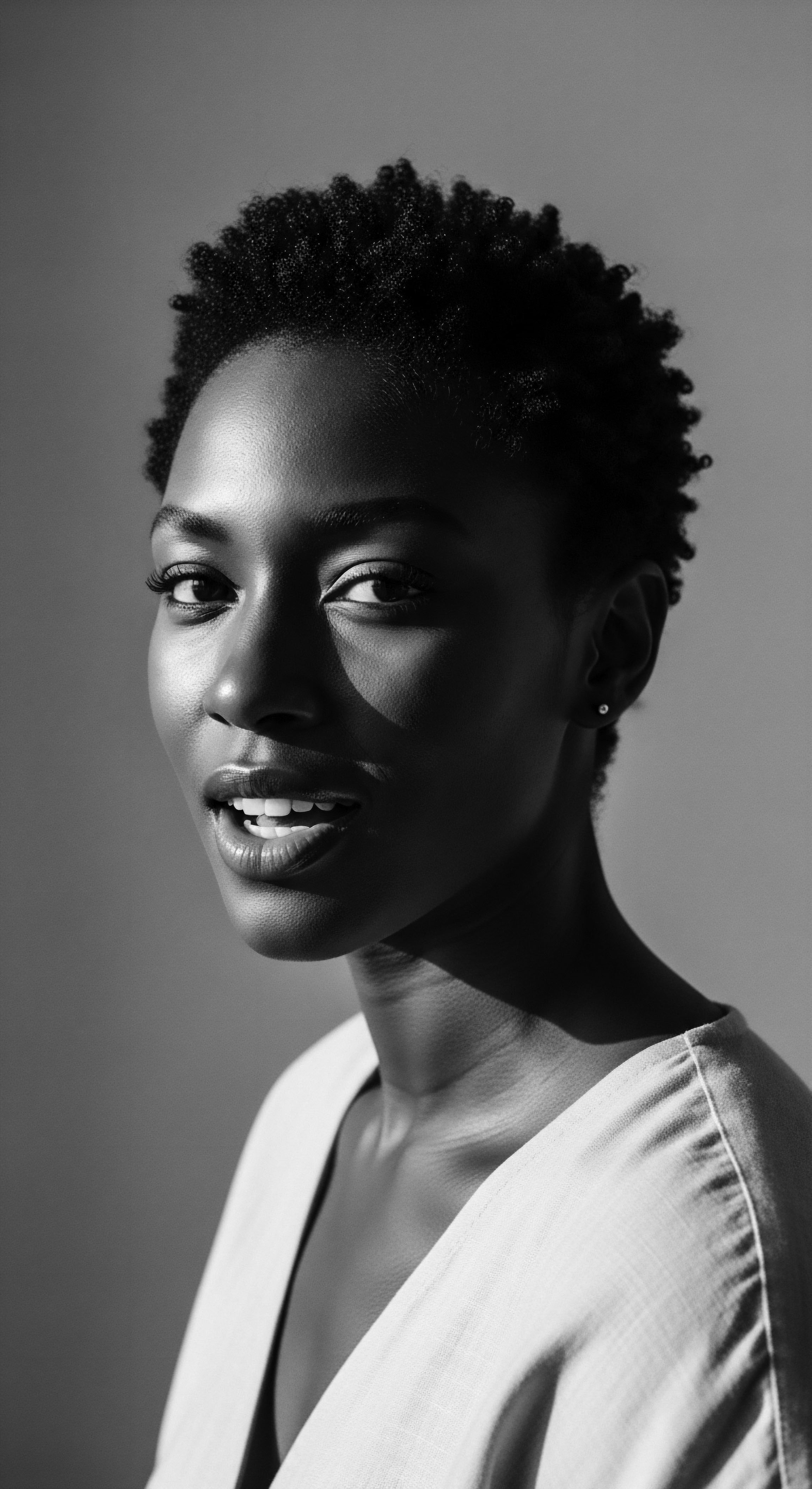
Relay
The enduring legacy of textured hair is not simply a biological marvel; it is a profound cultural story, carried forward through generations, and understood with growing clarity by scientific inquiry. The very query, “Can genetics explain diverse hair curl patterns across heritage lines?”, invites us to consider how our inherited biological characteristics intertwine with the deep cultural context of our ancestors. This connection is not merely academic; it shapes identity, influences daily rituals, and continues to affect societal perceptions of beauty and self-worth.

What Genetic Markers Influence Hair Texture Across Populations?
Modern genetic studies have indeed begun to illuminate the complex interplay of genes that contribute to the vast spectrum of hair curl patterns observed globally. For instance, while several genes collectively influence hair texture, specific variants have been identified with a strong prevalence in particular populations. One notable example is the EDAR V370A Allele. This specific genetic variant has a strikingly high frequency in East Asian and Native American populations, yet it is almost entirely absent in people of African and European ancestry.
Research indicates that this EDAR V370A variant is strongly associated with straight, thicker hair. A study examining 1,718 individuals from four distinct East Asian populations (Han, Tibetan, Mongolian, and Li) found a significant association between this variant and straight hair type, with an odds ratio of 2.05, suggesting a clear genetic influence. This variant, believed to have originated in central China around 35,000 years ago and subsequently becoming dominant in Northeast Asia approximately 19,000 years ago, illustrates a powerful instance of natural selection shaping physical traits in response to environmental pressures. While the exact adaptive advantage is debated, it is hypothesized that this hair type may have offered protection or benefits in specific environments.
Another gene, Trichohyalin (TCHH), also plays a role in hair shaft development and curl. Variations within the TCHH gene are more commonly linked to hair texture differences in populations of Northern European descent. This illustrates a key point ❉ while the underlying biological mechanism of hair follicle shape creating curl remains universal, the specific genetic pathways that influence the prevalence of certain curl patterns can differ across diverse human groups, mirroring ancient migratory patterns and environmental adaptations.
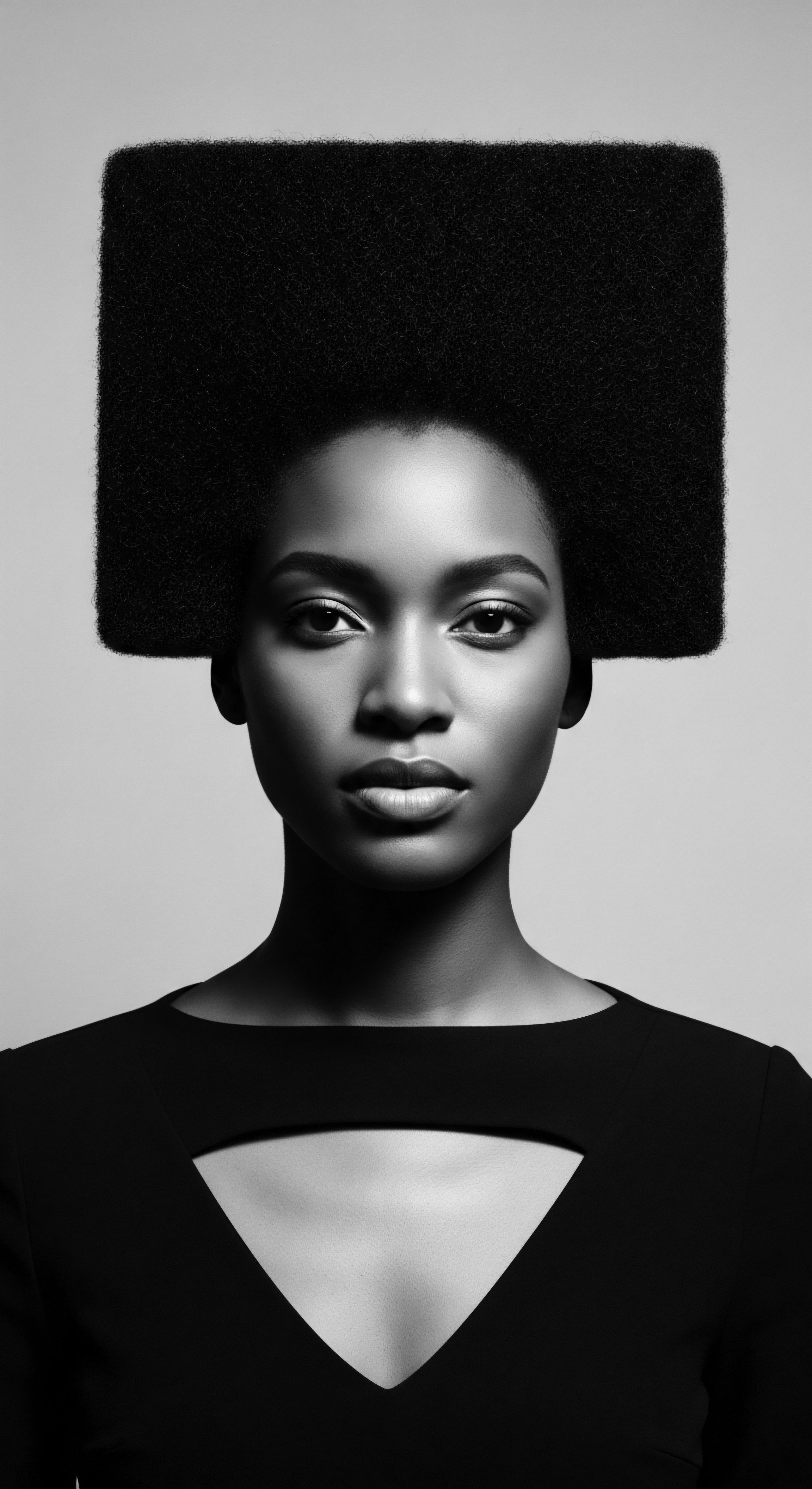
How Do Ancestral Practices Align with Modern Hair Science?
The wisdom passed down through ancestral traditions, particularly in Black and mixed-race communities, often finds validation in contemporary scientific understanding. Holistic care for textured hair, rooted in heritage, instinctively addresses the unique needs of these hair types—needs now being elucidated by genetic research.
- Moisture Retention ❉ Highly coiled hair, due to its elliptical shape and points of curvature, often experiences uneven distribution of natural scalp oils, making it prone to dryness. Ancestral practices consistently prioritized moisturizing with natural butters, oils, and humectants (like aloe vera), a practice now supported by understanding hair’s structural vulnerabilities.
- Gentle Handling ❉ The natural high curvature of afro-textured hair, while beautiful, also means it can be more susceptible to breakage if handled roughly. Traditional protective styles and gentle detangling methods, like finger-combing, inherently respect this fragility.
- Nutritional Support ❉ Historical diets, rich in specific plant-based ingredients known for their properties, often provided the micronutrients essential for healthy hair growth. This ancestral understanding aligns with modern nutritional science that connects internal health to external manifestations like hair vitality.
This convergence of ancient wisdom and modern inquiry reaffirms that the deep knowledge of hair cultivated within heritage communities was not merely anecdotal, but profoundly effective.
Understanding the genetic basis of diverse hair curl patterns helps us recognize the profound connection between our inherited traits and the ancestral journeys of humanity.
The nightly rituals of hair protection, a cornerstone of textured hair care, also carry a profound heritage. The use of Silk or Satin Bonnets and scarves, a practice observed in many Black and mixed-race households, reduces friction on the hair, minimizes moisture loss, and helps preserve curl patterns. This simple yet highly effective ritual stems from generations of practical experience in caring for hair prone to tangling and dehydration during sleep. It is a quiet act of self-care, a continuity of ancestral wisdom, and a testament to the ongoing dedication to hair well-being.
The ongoing exploration of hair genetics continues to shed light on how diverse environmental pressures and selective forces shaped human populations over millennia, influencing traits like hair texture. This scientific understanding enhances our appreciation for the resilience, adaptation, and beauty inherent in every coil, wave, and strand, grounding our present practices in a rich and enduring heritage.

Reflection
To ask if genetics explains the diverse hair curl patterns across heritage lines is to ask a fundamental question about who we are, where we come from, and how the very fibers of our being connect us to a shared, yet wonderfully varied, human story. From the subtle curve of a follicle shaped by ancient adaptations to the specific genetic markers that carry the whispers of distant migrations, the science confirms what our ancestors likely felt in their bones ❉ our hair is a living, breathing archive. It is more than strands; it is a manifestation of heritage, a continuum of identity, and a testament to the enduring human spirit.
The journey through the biology of curl, the rituals of care, and the historical echoes of style unveils a profound truth ❉ textured hair is a gift, a lineage made visible. It carries the wisdom of a thousand hands that braided, oiled, and adorned, honoring the innate beauty of what was passed down. As we continue to learn more about the intricacies of genes like EDAR and TCHH, and how they contribute to the stunning variety of coils and waves, we do not merely acquire scientific facts. We gain a deeper appreciation for the adaptive brilliance of human populations, the resilience of cultural practices, and the undeniable link between our past and our present.
Every strand, therefore, becomes a quiet celebration of ancestral wisdom, a vibrant declaration of belonging. The exploration of genetics does not diminish the cultural significance of hair; rather, it deepens it, grounding our inherited beauty in the very fabric of life’s continuity. It reminds us that care is not just about maintenance; it is an act of honoring, a sacred practice of connecting with the soul of every strand, ensuring that these stories continue to be told, generation after radiant generation.
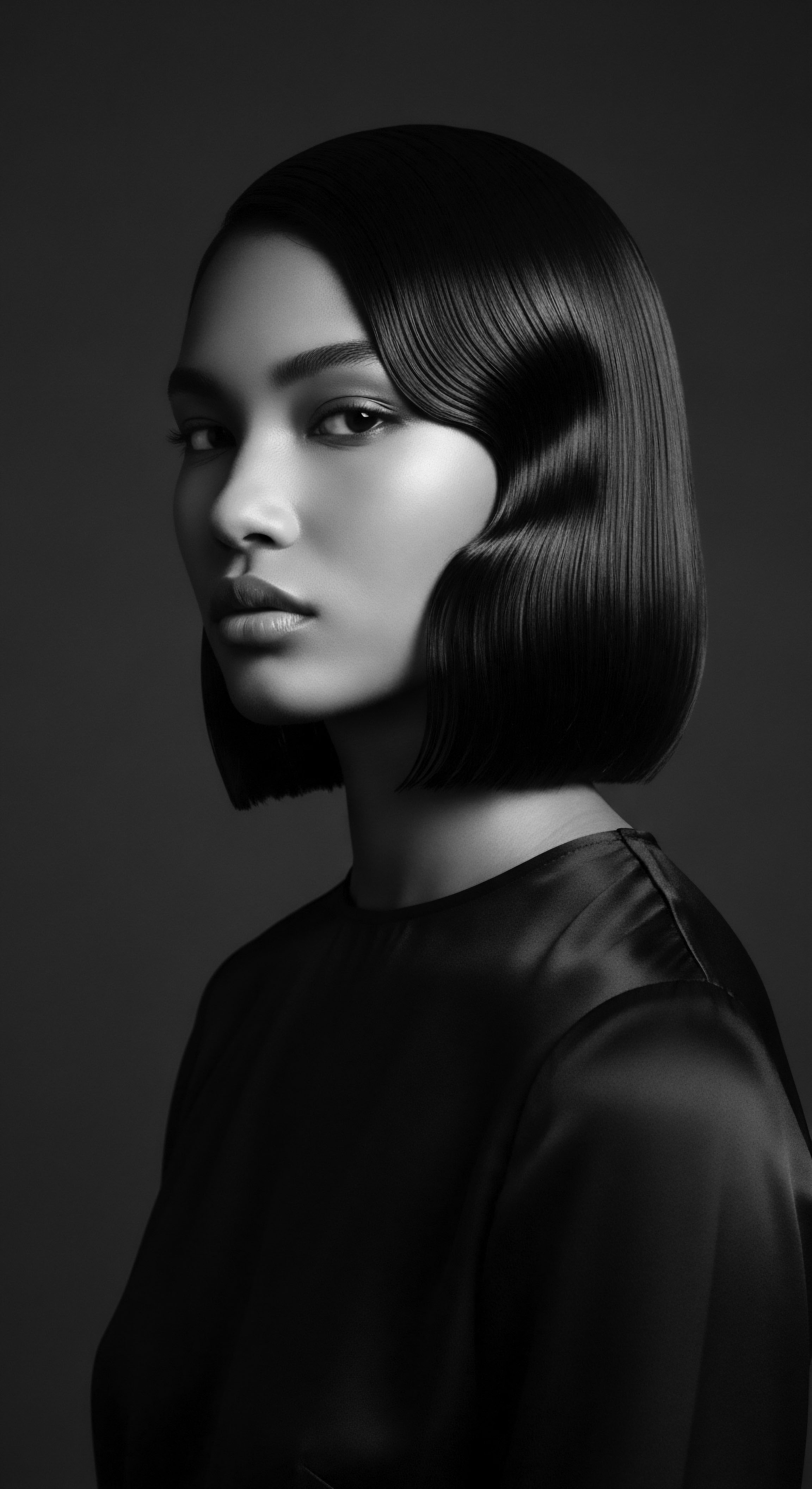
References
- Bradford, E. et al. “Natural population variance in hair curl appears to have a largely genetic basis and environmental pressure selecting for specialised hair morphology may well have arisen when humans migrated out of Africa.” For Review Only – Bradford Scholars, accessed June 7, 2025.
- Idowu, O. C. Markiewicz, E. & Oladele, D. B. (2024). The Genomic Variation in Textured Hair ❉ Implications in Developing a Holistic Hair Care Routine. Cosmetics, 11(6), 183.
- MedlinePlus. (2022). Is hair texture determined by genetics? MedlinePlus Genetics.
- Oladele, D. B. Markiewicz, E. & Idowu, O. C. (2024). The Genomic Variation in Textured Hair ❉ Implications in Developing a Holistic Hair Care Routine. Preprints.org .
- Parvizi, J. et al. (2008). New Gene Involved In Hair Texture, Density Discovered. Columbia University Medical Center.
- Sabeti, P. C. et al. (2007). Genome-wide detection and characterization of positive selection in human populations. Nature, 449(7164), 913-918.
- Wang, S. et al. (2010). The adaptive variant EDARV370A is associated with straight hair in East Asians. Human Mutation, 31(8), 964-972.
- Westgate, G. E. et al. (2017). The biology and genetics of curly hair. Experimental Dermatology, 26(5), 487-494.
